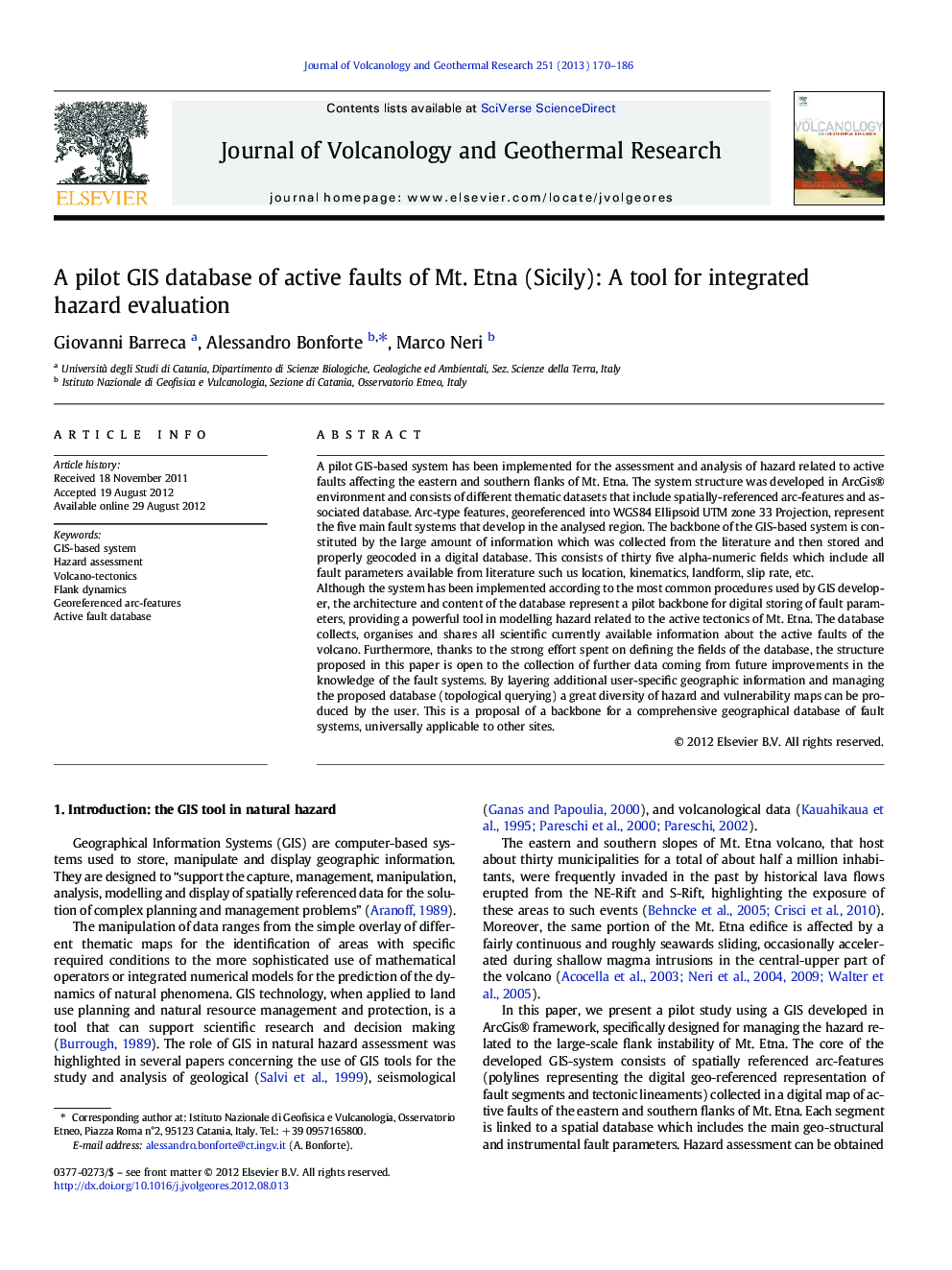| Article ID | Journal | Published Year | Pages | File Type |
|---|---|---|---|---|
| 4713209 | Journal of Volcanology and Geothermal Research | 2013 | 17 Pages |
A pilot GIS-based system has been implemented for the assessment and analysis of hazard related to active faults affecting the eastern and southern flanks of Mt. Etna. The system structure was developed in ArcGis® environment and consists of different thematic datasets that include spatially-referenced arc-features and associated database. Arc-type features, georeferenced into WGS84 Ellipsoid UTM zone 33 Projection, represent the five main fault systems that develop in the analysed region. The backbone of the GIS-based system is constituted by the large amount of information which was collected from the literature and then stored and properly geocoded in a digital database. This consists of thirty five alpha-numeric fields which include all fault parameters available from literature such us location, kinematics, landform, slip rate, etc.Although the system has been implemented according to the most common procedures used by GIS developer, the architecture and content of the database represent a pilot backbone for digital storing of fault parameters, providing a powerful tool in modelling hazard related to the active tectonics of Mt. Etna. The database collects, organises and shares all scientific currently available information about the active faults of the volcano. Furthermore, thanks to the strong effort spent on defining the fields of the database, the structure proposed in this paper is open to the collection of further data coming from future improvements in the knowledge of the fault systems. By layering additional user-specific geographic information and managing the proposed database (topological querying) a great diversity of hazard and vulnerability maps can be produced by the user. This is a proposal of a backbone for a comprehensive geographical database of fault systems, universally applicable to other sites.
► A GIS-based system was implemented to analyse the hazard related to active faults on Mt. Etna. ► The GIS was developed in ArcGis® and includes arc-type features and associated database. ► Database contains information about fault geometries and kinematics. ► Archived information can be represented in a great diversity of hazard maps. ► The GIS proposed can represent the common base for future hazard and scientific works.
